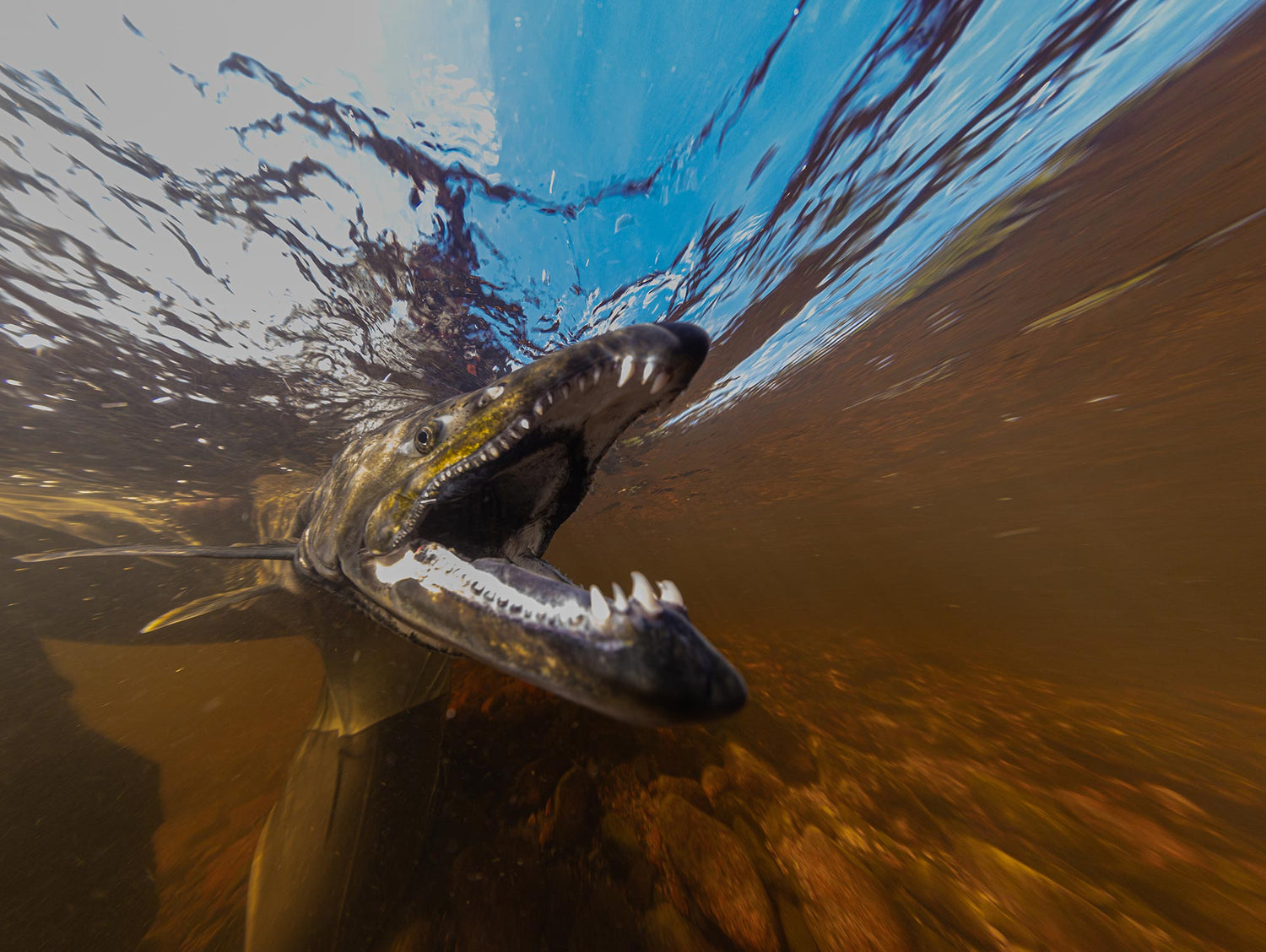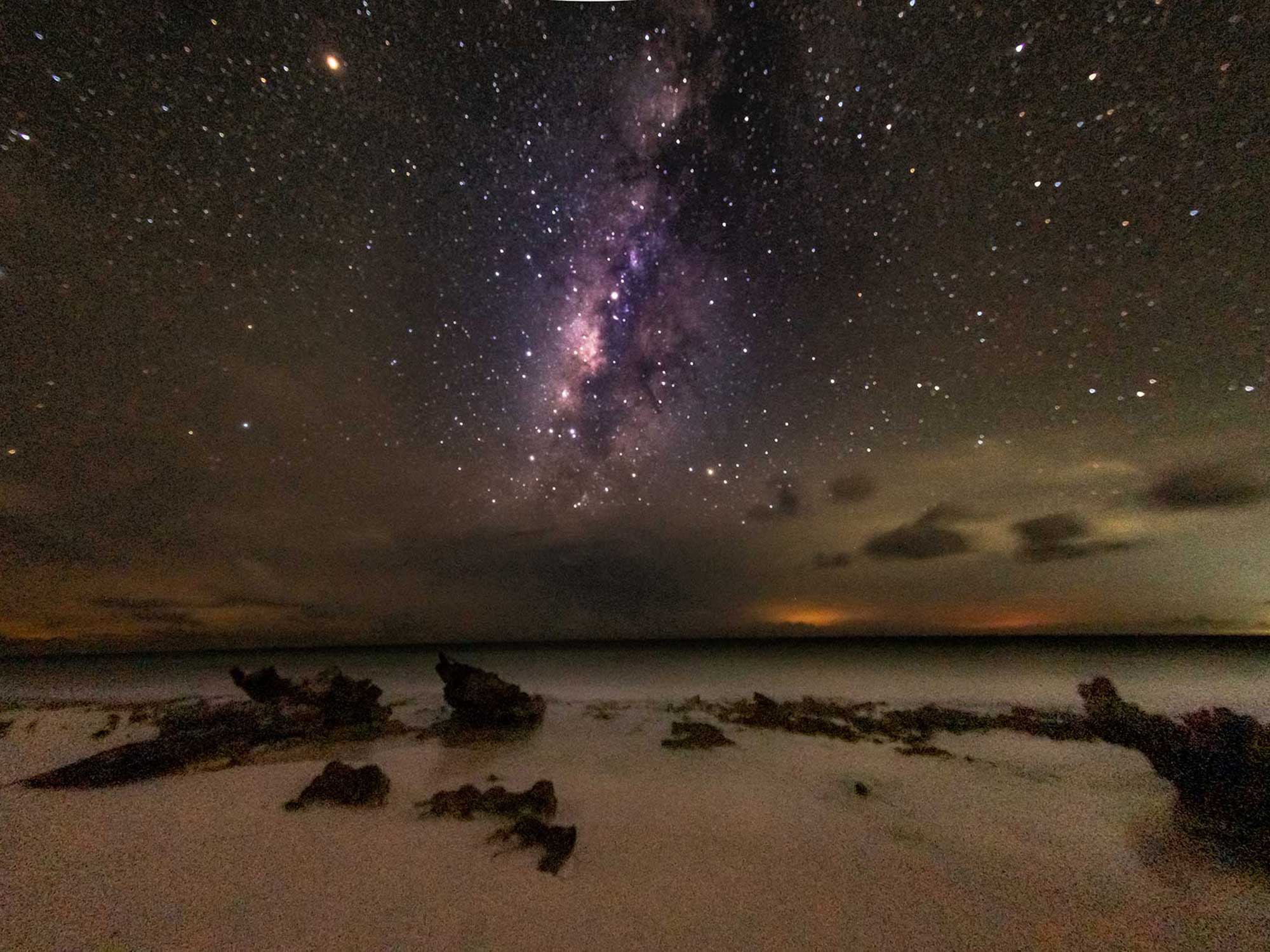Some of the best trout waters, often called Gold Medal waters, are strictly catch-and-release fishing. Many fly fishermen choose to release their fish even when it isn't required by law. This is true of many ocean fish as well, bonefish being an example. These fish are almost never eaten, but are sought after for their strength and difficulty to approach. Whether you enjoy the challenge in catch-and-release or just the challenge of photographing it, use the tips below to make sure you take home a prize winning image.

Canon R5 • F/7.1 • 1/200 • ISO 400 © Steve Miller
DSLR + Mirrorless
ISO: 200-400. Compared to diving we have a lot of light here, so you can set your ISO low for best final resolution.
Mode: Manual for camera, set strobes to TTL. If you are not using a flash, then Program, Aperture, or Shutter Priority will work.
Aperture: F16 or even smaller apertures will give you more depth of field than a wide open lens. Since we are shooting without (generally) being able to look through the viewfinder, this depth of field can really help. If the Auto Focus locks on the side of the fish and the eye is out of focus you won't know until you review the images.
Shutter Speed: 1/125-1/160 flash synch.
Lens: 8mm to 60mm. As long as you can get close, any focal length is worth using here.

This image was taken using the Olympus TG-6, a useful system if you plan to fly fish and photograph too. © Steve Miller
Point + Shoot
ISO: 100 to 200. If you have no light or strobe, you may need to raise the ISO, particularly on cloudy days or in the rain.
Mode: Manual or Aperture Priority. If you are shooting natural light, Program will work as well, a focus light or dive light will help here.
Aperture: F-8 will give you depth of field, and probably be the preferred Aperture for most point and shoot cameras.
Shutter Speed: 1/60th to 1/200 is plenty fast to stop the action.
Lens: Since we can shoot at super close distances, the wider the lens the better, but any focal length can work, even macro.

Canon R5 • EF8-15mm f/4L Fisheye USM • F/7.1 • 1/200 • ISO 320 © Steve Miller
Technique
Having the sun behind you is a good idea, to minimize the range of brightness in your frame. Being down current of your fish is more important, if you are upstream there will be a bunch of particulate stirred up by your feet flying by the fish. The best scenario is when there is just enough current to allow the fish to breathe and hover upright on the bottom facing upstream.
Strobes
Ideally you could have multiple strobes. One to light the subject itself, and another to light the background. These can be mounted out of the water, or submerged, or halfway between the two. If the light originates out of the water you will get some cool light rays. Your strobes modeling light can come in handy for achieving a fast focus lock. If a strobe is impractical to carry, a hand held flashlight can help a lot - particularly if you are shooting over/unders - when the camera will see the light of the sky, but the fish in in full shadow. The shadow is probably caused by your body, if the sun is behind you.
*Pro-Tips
Fly fishing often involves a lot of hiking and wading. If you want to fish, as opposed to just shooting, then a DSLR or Mirrorless housing will be a commitment. You need both hands to fly fish, and you can't just shove a housing in your pocket. A camera like the TG-6 or any that fit into our smaller housings make a lot of sense here. If you want to take your big camera, then you will need to set it on the beach while you fish, and do the same with your fly rod when you are shooting.
Try to shoot in a way that your body, or your buddy's body, isn't throwing the fish into shadow. This can be tricky but if you can get full sun on your subject it will make a big difference.
Additional Reading
Swimming Upstream: The Challenges and Solutions to Salmon Run Photography
Photographing the Salmon Run Underwater in Canada
Over-Under (Split Shots) Underwater Camera Settings
What I Wish I Knew When I Started in Underwater Photography [VIDEO]
The Importance of Hitting the Water with a Shot in Mind [VIDEO]













